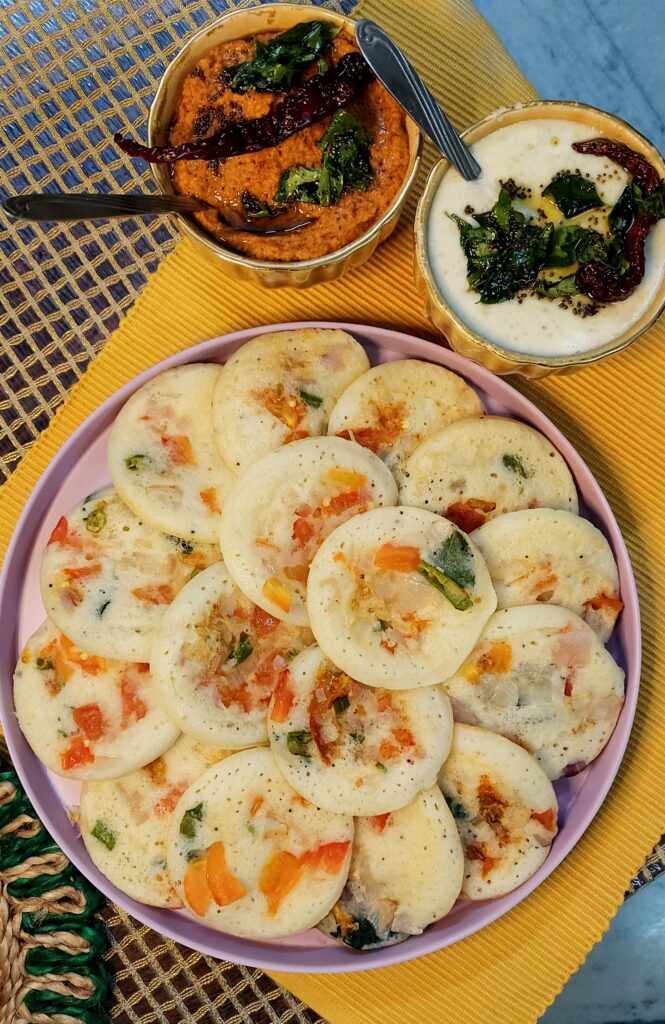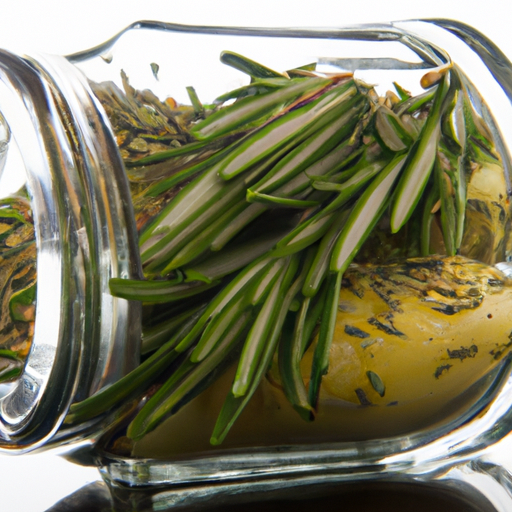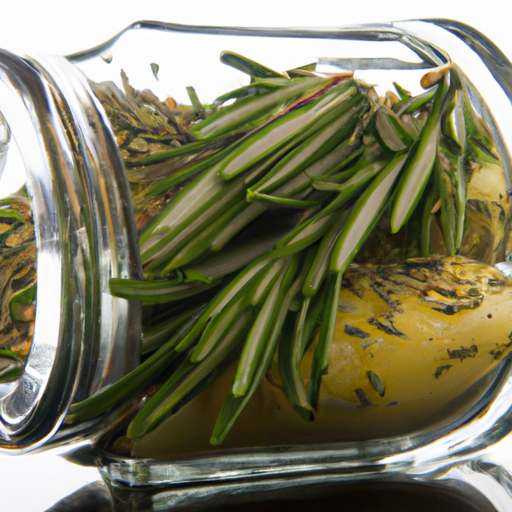Are you looking to take your cooking skills to the next level and make your dishes more delicious? If so, it’s time to focus on improving your seasoning and flavoring techniques. By understanding how different spices and ingredients work together, you can elevate the flavors of your dishes and create truly memorable meals. Whether it’s experimenting with new herbs, learning about the art of balancing flavors, or understanding the importance of cooking techniques, there are plenty of ways to enhance the taste of your food. In this article, we’ll explore various tips and tricks to help you become a master at seasoning and flavoring, making every dish you prepare a mouthwatering experience.

Exploring Different Seasonings
When it comes to creating delicious dishes, one of the most important aspects is the seasoning and flavoring. Seasonings can truly transform a dish, elevating it from ordinary to extraordinary. To enhance your seasoning and flavoring techniques, it’s essential to experiment with different herbs and spices, try different types of salt, and get creative with flavored oils and vinegars.
Experimenting with herbs and spices
Herbs and spices are a wonderful way to add depth and complexity to your dishes. Whether you’re cooking meat, vegetables, or even desserts, there is a wide variety of herbs and spices that you can experiment with to enhance the flavors. From classics like basil, oregano, and thyme to more exotic options like turmeric, cardamom, and cumin, each herb and spice brings its own unique flavor profile to the table. Don’t be afraid to get adventurous and try new combinations to find the perfect blend that complements your dish.
Try different types of salt
Salt is a staple in every kitchen, and it’s not just about adding a pinch here and there for a salty flavor. Different types of salt can bring out different flavors in your dishes. From sea salt to Himalayan salt, each variety has its own distinct taste and texture. Experimenting with different types of salt can be a fun and creative way to enhance the flavors in your cooking. Just remember to taste as you go and adjust accordingly, as some salts can be stronger or milder than others.
Using flavored oils and vinegars
Flavored oils and vinegars are another fantastic way to add depth and complexity to your cooking. Infused oils, such as garlic-infused olive oil or chili-infused sesame oil, can bring a burst of flavor to your dishes. Meanwhile, flavored vinegars like balsamic vinegar or apple cider vinegar can add a tangy and acidic note. By incorporating these flavored oils and vinegars into your cooking, you can take your dishes to a whole new level. Drizzle them over salads, use them as a marinade, or even add a few drops at the end of cooking to brighten up the flavors.
Enhancing Flavors with Aromatics
Aromatics play a crucial role in enhancing the flavors of your dishes. These common ingredients not only provide a pleasant aroma but also lend a depth of flavor that can elevate your cooking to new heights. The key aromatics to focus on are garlic, onions, herbs, ginger, and lemongrass.
Utilizing garlic and onions
Garlic and onions are the foundation of many dishes and are essential for building flavor. When sautéed or caramelized, they impart a sweet and savory taste that enhances the overall profile of the dish. Mastering the techniques of properly cooking garlic and onions can greatly improve your seasoning and flavoring techniques. Whether it’s mincing garlic to release its potent flavors or slow-cooking onions until they turn golden brown, these aromatics can be the secret to culinary success.
Exploring the world of herbs
Herbs are a flavor powerhouse that can take your dishes from bland to extraordinary. From the fragrant and versatile basil to the earthy and robust rosemary, herbs can add layers of complexity to your cooking. Fresh herbs like parsley, cilantro, and dill can bring freshness and brightness to your dishes, while dried herbs like thyme, oregano, and sage offer a more concentrated flavor. Experiment with different herbs to discover which combinations work best for you, and don’t be afraid to experiment with fresh and dried options.
Incorporating ginger and lemongrass
Ginger and lemongrass are two ingredients that add a zing of flavor to your dishes. Ginger offers a warm and slightly spicy note, while lemongrass brings a bright and citrusy flavor. Both ingredients are commonly used in Asian cuisines and can be incorporated into a variety of dishes, from stir-fries and curries to soups and marinades. Fresh ginger can be grated or minced, while lemongrass can be bruised and sliced. By utilizing these aromatics, you can infuse your dishes with a vibrant and refreshing taste.
Balancing Flavors
When it comes to creating mouthwatering dishes, it’s essential to understand the concept of flavor balance. Balancing flavors means ensuring that no single taste overwhelms the others, creating a harmonious blend that delights the taste buds. To achieve this, it’s important to understand the taste profile of the ingredients you’re working with, master the art of salt, and explore sweet and sour combinations.
Understanding the taste profile
Each ingredient has its own unique taste profile, which can be categorized into five basic tastes: sweet, sour, salty, bitter, and umami. By understanding these taste profiles, you can better balance the flavors in your dishes. For example, if a dish is too sweet, adding a touch of sourness or saltiness can help to balance it out. By experimenting with different taste combinations, you can create a well-rounded and flavorful dish that keeps your palate interested.
Mastering the art of salt
Salt is a powerful tool when it comes to balancing flavors. It not only enhances the taste of food but also helps to bring out the flavors of other ingredients. However, it’s important to use salt judiciously and thoughtfully. Too much salt can overpower the other flavors in a dish, while too little can cause the dish to taste bland. The key is to taste as you go and add salt gradually, adjusting until you achieve the perfect balance. Remember that different types of salt vary in intensity, so be mindful of how much you use.
Sweet and sour combinations
One classic flavor combination that never fails to please is the pairing of sweet and sour. This dynamic duo can create a wonderful balance of flavors that excite the palate. Sweetness adds depth and richness, while sourness brings brightness and tang. Whether it’s a squeeze of lemon juice in a savory dish, a drizzle of honey in a salad dressing, or a splash of vinegar in a sauce, experimenting with sweet and sour combinations can take your dishes to new heights of deliciousness.
Marinating and Infusing Flavors
Marinating and infusing flavors is a technique that allows you to introduce and optimize the taste profile of your ingredients. From marinating meats and vegetables to infusing flavors into oils and liquids, these methods can take your dishes from ordinary to extraordinary.
Marinating meats and vegetables
Marinating is a process where ingredients are soaked in a flavorful liquid to enhance their taste and tenderness. Whether you’re grilling a steak, roasting a chicken, or even stir-frying vegetables, marinating can transform your ingredients into mouthwatering delights. The marinade can be as simple as a mixture of oil, acid (such as vinegar or citrus juice), herbs, and spices, or it can be more complex with added flavors like soy sauce, honey, or yogurt. The longer you marinate, the more time the flavors have to penetrate and infuse into your ingredients, resulting in a more pronounced and well-developed taste.
Infusing flavors into oils and liquids
Infusing flavors into oils and liquids is another technique that can enhance the taste of your dishes. By combining herbs, spices, fruits, or even vegetables with oils or liquids like vinegar or alcohol, you can create a flavorful base that can be used in cooking, dressings, or even as a finishing touch. Infused oils can add a delicate hint of flavor to salads, pasta, or roasted vegetables, while infused liquids can be used as a marinade or a flavorful addition to sauces and soups.
Using brines and rubs
Brining is a process where meat or poultry is soaked in a solution of salt and water to improve its flavor, moisture, and tenderness. This technique is particularly useful for lean cuts of meat that can easily dry out during cooking. The salt in the brine helps to break down the muscle fibers, allowing the meat to retain more moisture and become more tender. You can experiment with adding additional flavors like herbs, spices, and even sugar to the brine to infuse the meat with even more taste. Rubs, on the other hand, are dry mixtures of herbs, spices, and seasonings that are applied directly to the surface of the meat before cooking. By rubbing the mixture into the meat, you can add a burst of flavor that permeates throughout the cooking process.

Utilizing Heat and Cooking Techniques
Heat and cooking techniques play a vital role in unlocking and intensifying flavors. By understanding how to sear and caramelize, utilizing grilling and smoking, and using slow cooking methods, you can create dishes bursting with flavor.
Learning how to sear and caramelize
Searing and caramelizing are two techniques that can add depth and complexity to your dishes. Searing involves cooking the surface of meat or vegetables over high heat to create a delicious crust, which not only enhances the appearance but also enhances the flavor. The Maillard reaction, which occurs during searing, creates a complex combination of flavors that can take your dishes to another level. Caramelizing, on the other hand, is the process of browning sugars in ingredients like onions, giving them a richer and sweeter taste. By mastering these techniques, you can unlock a whole new world of flavors in your cooking.
Grilling and smoking for intense flavor
Grilling and smoking are two cooking techniques that can infuse your food with a distinct and intense flavor. Grilling over an open flame can impart a smoky and charred taste, while smoking involves slow-cooking food over indirect heat and smoke, allowing the flavors to permeate. Whether you’re grilling a steak, a whole fish, or even vegetables, or smoking a brisket or ribs, these techniques can elevate the taste of your dishes to a whole new level. Experiment with different types of wood chips and marinades to create unique and delicious flavor combinations.
Using slow cooking methods
Slow cooking methods like braising, stewing, and simmering are excellent ways to intensify flavors. By cooking ingredients over low heat for an extended period, the flavors have ample time to develop and meld together. Tough cuts of meat become tender and succulent, while vegetables become infused with rich and savory flavors. These slow cooking methods allow you to create dishes that are not only bursting with taste but also incredibly satisfying. Just be sure to adjust the seasonings and taste as you go, as slow cooking can mellow the flavors, and you may need to add a bit more seasoning towards the end of cooking.
Exploring Ethnic Cuisines
One of the best ways to expand your seasoning and flavoring techniques is by exploring various ethnic cuisines. Each culture has its own unique blend of spices, herbs, and ingredients that can open up a world of flavors to your cooking. Whether you delve into the rich and diverse flavors of Asian cuisine, discover the vibrant and fresh tastes of the Mediterranean, or try out the fiery and bold spices of Latin America, exploring ethnic cuisines can provide endless inspiration for your culinary adventures.
Delving into Asian cuisine
Asian cuisine offers a diverse range of flavors that can take your cooking to new heights. From the umami-packed ingredients in Japanese cuisine to the aromatic spices in Indian dishes, there is something for everyone to explore. Try your hand at making homemade sushi rolls, whip up a flavorful Thai curry, or experiment with the delicate flavors of Chinese stir-fries. By incorporating elements of Asian cuisine into your cooking repertoire, you can infuse your dishes with a whole new level of taste and complexity.
Discovering the Mediterranean flavors
Mediterranean cuisine is known for its fresh and vibrant flavors, showcasing ingredients like olive oil, garlic, lemon, and a variety of herbs. From the tangy and garlicky tzatziki in Greek cuisine to the aromatic and earthy spices in Moroccan dishes, the Mediterranean offers a wealth of culinary inspiration. Try your hand at making a classic Greek salad, indulge in a rich and flavorful Moroccan tagine, or whip up a refreshing Italian caprese salad. By incorporating Mediterranean flavors into your cooking, you can transport your taste buds to the sunny shores of the Mediterranean.
Trying out Latin American spices
Latin American cuisine is synonymous with bold and fiery flavors. From the smoky heat of chipotle peppers in Mexican cuisine to the zesty and tangy marinades of Peruvian dishes, there is no shortage of exciting spices and seasonings to experiment with. Try your hand at making homemade salsa verde, spice up your tacos with a homemade adobo sauce, or explore the flavors of a traditional Brazilian feijoada. By embracing Latin American spices, you can add a burst of flavor and excitement to your cooking.

Pairing and Complementing Flavors
Pairing and complementing flavors is an art that can take your cooking to the next level. By harmoniously matching flavors, understanding flavor profiles, and contrasting tastes for balance, you can create dishes that are well-rounded and incredibly satisfying.
Matching flavors harmoniously
Matching flavors harmoniously involves finding ingredients that complement and enhance each other. For example, pairing roasted meats with rosemary, or combining fresh tomatoes with basil and mozzarella in a Caprese salad. By seeking out ingredients that work well together, you can create flavor combinations that are balanced and delicious. Don’t be afraid to experiment with different pairings and combinations to find your own unique flavor profile.
Understanding flavor profiles
Understanding flavor profiles is key to creating well-balanced dishes. Each ingredient has its own distinct tastes, aromas, and textures that contribute to the overall flavor profile. For example, citrus fruits offer a bright, tangy flavor, while mushrooms provide an earthy and umami taste. By understanding these flavor profiles, you can combine ingredients that complement each other, creating a harmonious blend of tastes and textures. Experiment with contrasting flavors like sweet and salty or spicy and creamy to create depth and complexity in your dishes.
Contrasting flavors for balance
Contrasting flavors can add intrigue and balance to your dishes. By pairing ingredients that have opposing tastes, you can create a dish that is both exciting and well-rounded. Think about the classic combination of sweet and salty, such as caramel and sea salt or pineapple and ham. The contrasting flavors create a balance and harmony that keeps your taste buds engaged. Experiment with contrasting flavors in your cooking to create dishes that are both surprising and delicious.
Adding Umami and Depth
Umami, often referred to as the fifth taste, is a savory and deeply satisfying flavor that can add depth to your dishes. By incorporating ingredients with umami, building layers of flavor, and enhancing dishes with broth and stock, you can create meals that are rich and satisfying.
Using ingredients with umami
Umami-rich ingredients, such as soy sauce, mushrooms, Parmesan cheese, and tomatoes, can add a savory and meaty taste to your dishes. These ingredients are known for their ability to enhance and deepen flavors, making them an excellent addition to soups, stews, sauces, and marinades. By incorporating these umami ingredients into your cooking, you can create dishes that are incredibly flavorful and satisfying.
Building layers of flavor
Building layers of flavor is a technique that involves adding multiple ingredients and seasonings throughout the cooking process to create complexity and depth. Start by sautéing aromatics like onions, garlic, and spices to build a flavorful base. Then, incorporate additional ingredients like herbs, spices, and sauces to enhance the taste. By adding these layers of flavor, you can create dishes that are rich, multidimensional, and utterly delicious.
Enhancing dishes with broth and stock
Broths and stocks are essential in adding depth and richness to your dishes. Whether you’re making a soup, a sauce, or even a risotto, a good quality broth or stock can elevate the flavors to new heights. By simmering bones, vegetables, and aromatics for an extended period, the flavors and nutrients are extracted, resulting in a flavorful liquid that can be used as a base for a variety of dishes. Experiment with different types of broth or stock, such as chicken, beef, and vegetable, to enhance the taste of your recipes.

Seasoning and Flavoring with Texture
Texture is an often overlooked aspect of seasoning and flavoring, but it can greatly impact the overall dining experience. By playing with crunchy elements, exploring creamy and smooth textures, and balancing textures in a dish, you can create meals that are not only delicious in taste but also satisfying in mouthfeel.
Playing with crunchy elements
Adding crunchy elements to your dishes can provide a delightful contrast in texture. Whether it’s topping a salad with toasted nuts, adding crispy bacon to a pasta dish, or sprinkling breadcrumbs over a casserole, these crunchy elements can add excitement and interest to your meals. Experiment with different textures to create a dish that is not only flavorful but also has a satisfying bite.
Exploring creamy and smooth textures
Creamy and smooth textures can create a luxurious and indulgent dining experience. From incorporating creamy sauces and dressings to adding velvety textures with ingredients like avocado and tofu, these elements can transform your dishes into a velvety delight. Experiment with different textures to create a dish that is both rich in flavor and satisfyingly smooth.
Balancing textures in a dish
Balancing textures is essential in creating a well-rounded and enjoyable eating experience. By combining ingredients with varying textures, such as crispy vegetables, tender meats, and creamy sauces, you can create a dish that is pleasing to both the palate and the senses. Consider the contrast between a perfectly seared steak and a side of crispy roasted potatoes or the pairing of a tender fish fillet with a creamy garlic sauce. By balancing textures, you can create a dish that is not only delicious but also satisfying to eat.
Understanding the Science of Flavor
To truly master seasoning and flavoring techniques, it’s important to have a basic understanding of the science behind taste. By learning about taste receptors, the impact of temperature on taste, and chemical interactions in cooking, you can become a more informed and confident cook.
Learning about taste receptors
Taste receptors are specialized cells found on the tongue that are responsible for detecting and sending signals of taste to the brain. These receptors allow us to perceive the five basic tastes: sweet, sour, salty, bitter, and umami. By understanding how taste receptors work and how they respond to different flavors, you can better manipulate and enhance the taste of your dishes.
The impact of temperature on taste
Temperature plays a significant role in how we perceive flavors. Some tastes, like sweetness, are more pronounced at higher temperatures, while others, like bitterness, tend to be more prominent at cooler temperatures. For example, a hot cup of coffee may taste sweeter than the same coffee served cold. By considering the impact of temperature on taste, you can adjust your seasoning and flavoring techniques accordingly to create the desired flavor profile.
Chemical reactions in cooking
Chemical reactions occur continually during the cooking process and can greatly influence the flavors of your dishes. One example is the Maillard reaction, which occurs when proteins and sugars are subjected to high heat, resulting in browning and the development of rich flavors and aromas. Another example is the reaction that takes place when acids, such as citrus juice or vinegar, come into contact with certain ingredients, enhancing taste and breaking down proteins. By understanding these chemical interactions, you can make more informed choices when seasoning and flavoring your dishes.
In conclusion, improving your seasoning and flavoring techniques can transform your cooking from ordinary to extraordinary. By experimenting with different seasonings and spices, using a variety of salts, and exploring flavored oils and vinegars, you can enhance the flavors in your dishes. Incorporating aromatics like garlic, onions, and herbs can add depth and complexity, while balancing flavors and exploring different cooking techniques can unlock new dimensions of taste. By delving into ethnic cuisines, pairing and complementing flavors, and understanding the science behind flavor, you can take your culinary skills to new heights. So, don’t be afraid to get creative in the kitchen and explore the wonderful world of seasoning and flavoring. Your taste buds will thank you!





